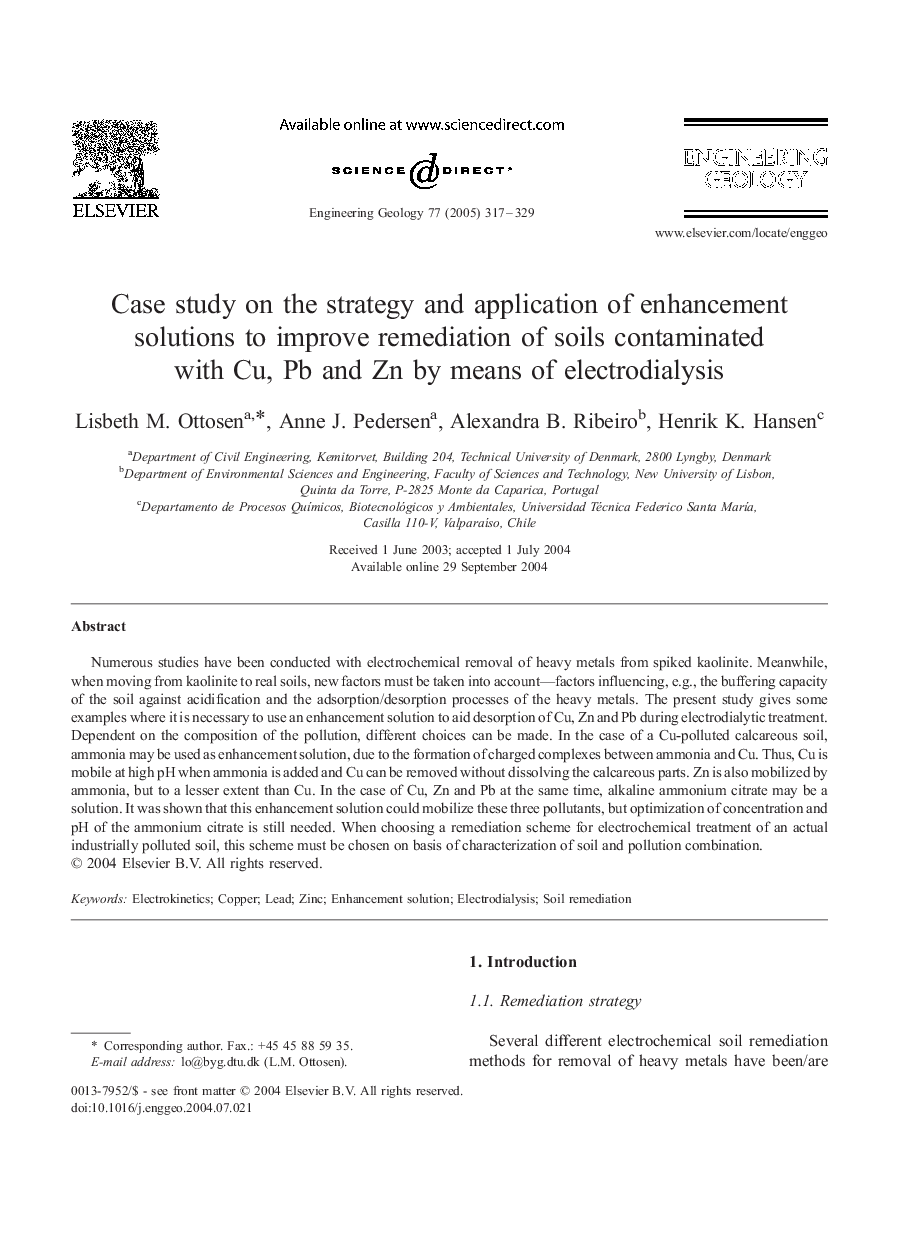| Article ID | Journal | Published Year | Pages | File Type |
|---|---|---|---|---|
| 9537799 | Engineering Geology | 2005 | 13 Pages |
Abstract
Numerous studies have been conducted with electrochemical removal of heavy metals from spiked kaolinite. Meanwhile, when moving from kaolinite to real soils, new factors must be taken into account-factors influencing, e.g., the buffering capacity of the soil against acidification and the adsorption/desorption processes of the heavy metals. The present study gives some examples where it is necessary to use an enhancement solution to aid desorption of Cu, Zn and Pb during electrodialytic treatment. Dependent on the composition of the pollution, different choices can be made. In the case of a Cu-polluted calcareous soil, ammonia may be used as enhancement solution, due to the formation of charged complexes between ammonia and Cu. Thus, Cu is mobile at high pH when ammonia is added and Cu can be removed without dissolving the calcareous parts. Zn is also mobilized by ammonia, but to a lesser extent than Cu. In the case of Cu, Zn and Pb at the same time, alkaline ammonium citrate may be a solution. It was shown that this enhancement solution could mobilize these three pollutants, but optimization of concentration and pH of the ammonium citrate is still needed. When choosing a remediation scheme for electrochemical treatment of an actual industrially polluted soil, this scheme must be chosen on basis of characterization of soil and pollution combination.
Related Topics
Physical Sciences and Engineering
Earth and Planetary Sciences
Geotechnical Engineering and Engineering Geology
Authors
Lisbeth M. Ottosen, Anne J. Pedersen, Alexandra B. Ribeiro, Henrik K. Hansen,
